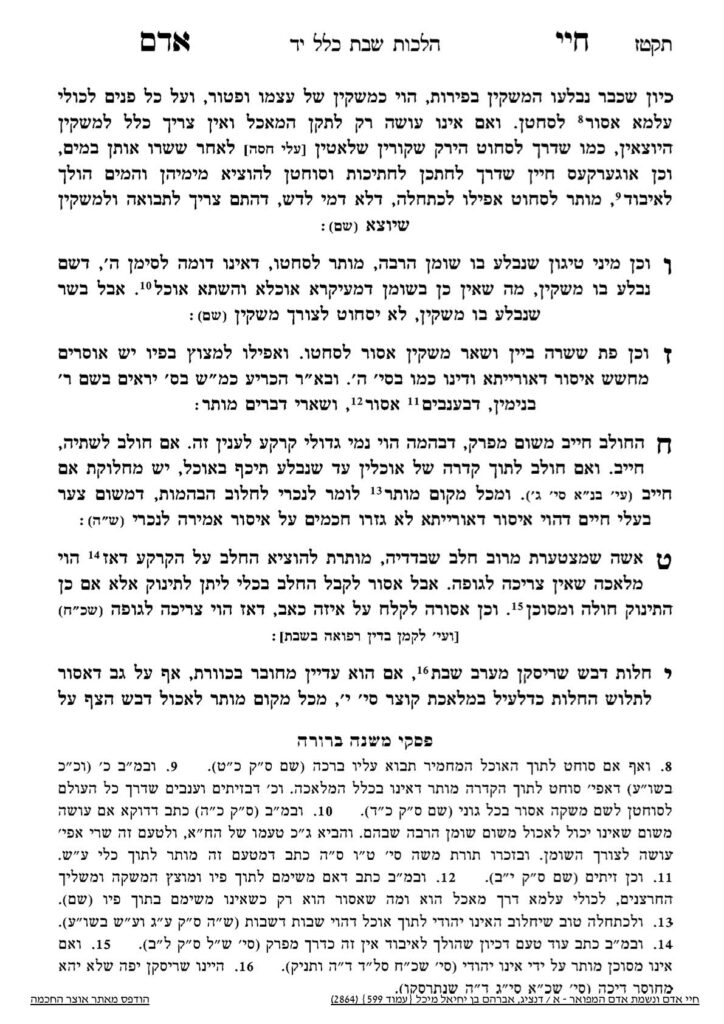Sponsorships for the upcoming Klalim, which discuss the 39 melachos of Shabbos, are available. Please contact Rabbi Reingold for more information at rabbireingold@gmail.com or 301.996.5910
We are beginning simanim 8 and 9, where the Chayei Adam will continue the discussion of sechita. He will move from discussing kevashim and shelakos to discussing milking, both in regards to milking an animal and in regards to a woman who needs to express milk for a child. Milking approximates the action of dosh. We have learned (s0364) that the idea of dosh is the act of extracting the usable kernel from the non-usable husk; over here, one is extracting the usable milk from the non-usable animal or person.
There are three scenarios of milking which we will need to discuss:
- Extracting the milk for the purpose of using the milk. This usage would be a melacha deoraysa. Milk is one of the seven mashkin, so extracting it follows the same halachos as olives and grapes discussed previously.
- Extracting the milk only in order to relieve the animal of its pain. It is painful for the animal to hold a large weight of milk within the udder, and it can even become dangerous in certain scenarios. In this scenario, one is expressing the milk directly onto the ground or in some other way that it is unusable, because the primary purpose of this milking is to relieve pain rather than to express milk. Expressing the milk for this purpose is at least a melacha she’eina tzricha legufa. Additionally, we have learned that the entire toldah of sechita only approximates dosh if it is extracted for use. If it is not extracted for use, it does not approximate the melacha of dosh whatsoever. If so, maybe extracting the milk in this case would not be considered a melacha at all.
- Mashkeh habaah la’ochel, where the milk will be expressed directly into a food. In theory, the liquid never gets the status of mashkeh, since it started out as part of the cow and is considered food, and went directly into another food without having a chance to become liquid (see more in shiur s0369).
- Milking is assur due to the melacha of mefareik, which is a toldah of dosh.
- There are three cases of milking, extracting the milk for the purpose of using the milk, extracting solely in order to relieve the animal of its pain, and mashkeh ba laochel.



